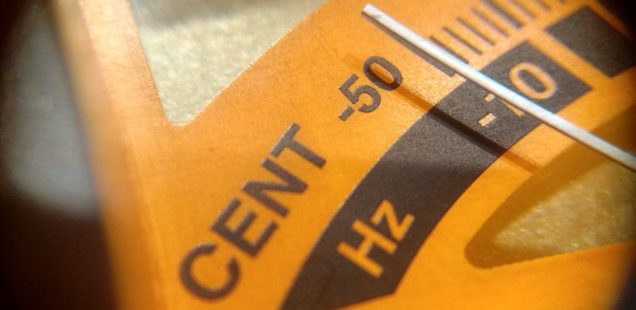
Helping String Orchestra Students Tune Independently
The goal for our students is to help them become independent learners and musicians. As educators, we want our students to be able to practice effectively, set goals, think critically about their music making, perform and play expressively with a beautiful sound, and so on. Part of that musical independence includes having students tune independent of a teacher’s help. As a middle school orchestra director, this task always proves challenging to my students. I’ve tried various methods and tactics to help my students begin to tune independently and without a lot of help from me. Their ability to tune independently rests on various skill sets they must develop like being able to match pitch, recognize when they are “in” and “out” of tune, and identifying if their the strings they are tuning are flat or sharp.
Cross Tuning
This year, I have really been working with my seventh and eighth grade orchestra students on tuning by fifths. After reading a bit of Christopher Selby’s book Habits of a Successful Orchestra Teacher, I decided to really push my students in tuning, largely, on their own and by using fifths. Inspired by Selby’s tuning methods, I adapted a method of tuning called “cross tuning” taken from his book. In adapting and implementing this method of tuning, I have noticed students becoming more confident, independent, and engaged during tuning. Furthermore, more class time has been gained by putting the ownership of tuning on the students. Additionally, I am able to quickly provide valuable one-on-one feedback to students who may be having a challenging time tuning because I am able to circle around the room and check for accuracy.
For students to tune independently by fifths, in this “cross tuning” method, they must first hear and know what a fifth sounds like. What I really love about this idea is that it trains the students ears to hear the interval of a fifth and to hear, experience, and feel that interval being “in” and “out” of tune. Additional practice recognizing the sound of a fifth can be gained by humming each note in the interval individually or together with a partner. They can also play each tuning interval on a piano. A students ability to hear, recognize, and tune by fifths will take some time and practice.
Here is how my adaptation of the “cross tuning” idea has been working:
- Set the classroom tuner on the note A and let it drone while students tune their A string. During this time, I walk around and assist students as needed or give them verbal feedback to help them continue tuning on their own.
- I then turn off the A drone and have all the students play their A strings in unison. I ask students to adjust as needed and match their pitch to the group “A.”
- We then start the process of tuning by fifths. First, I have one half of the room sound their open “A” string while the other half of the room tunes their D string – a fifth away. Once that first groups D string is in tune, I tell the students to switch and the second group is to now tune their D string.
- Second, the group that was sounding their D string now continues to hold their note. The other half of the room now tunes their G string – a fifth away. The two groups then switch.
- Thirdly, I tell all violins and basses to hold out their open G strings while the violas and cellos tune their C strings – a fifth away.
- Lastly, I tell the violas and the cellists to hold out their A string while violins and basses tune their open E strings – a fifth away.
As students are tuning, I will walk around the room and check for understanding and accuracy. I will assist students as needed or provide feedback.
Conclusion
In this time I have been using this method of tuning I have experienced many positives within the classroom. I have found it limits down time and a lack of engagement during tuning. Furthermore, this method of tuning immediately draws each student into the process of tuning and puts the ownership of tuning on them. Lastly, students are able to experience the process of tuning their own strings using fifths and independently which ultimately prepares them for truly tuning on their own.
What other methods of tuning have you employed to help your students gain independence in this area?